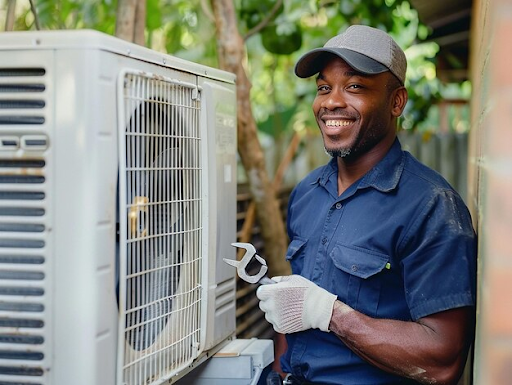Solving Common Home Temperature Control Problems

Maintaining a comfortable and consistent temperature in your home can be a constant challenge, especially as the seasons change. Whether you’re dealing with hot spots, uneven cooling, or unexpected spikes in energy bills, there are often underlying issues that need to be addressed. In this article, we’ll explore some of the most common home temperature control problems and provide practical solutions to help you achieve the perfect indoor climate.
Addressing Uneven Cooling
If certain rooms in your home feel significantly warmer or cooler than others, it could be a sign of an imbalance in your ac repair system. This can be caused by factors like blocked or leaky ductwork, improper air flow, or an oversized or undersized air conditioning unit. Consulting with a professional AC repair technician can help identify the root cause and implement the necessary adjustments.
Combating Hot Spots
Hot spots, or areas in your home that consistently feel warmer than the rest, can be frustrating and impact your overall comfort. This issue may be attributed to poor insulation, inadequate ventilation, or even the placement of heat-generating appliances. Addressing these problems through targeted insulation upgrades, strategic ventilation improvements, or rearranging your home’s layout can help mitigate hot spots.
Reducing Energy Costs
Unexpected spikes in your energy bills can be a sign that your home’s temperature control system is not operating at its optimal efficiency. This could be due to factors like an aging AC repair unit, inefficient thermostat settings, or air leaks in your home’s envelope. Investing in regular maintenance, upgrading to a more energy-efficient system, and sealing any air leaks can help you regain control over your energy costs.
Maintaining Consistent Temperatures
Achieving a consistent temperature throughout your home can be a challenge, especially in multi-story dwellings or homes with open floor plans. This issue may be caused by factors like inadequate zoning, imbalanced air flow, or the need for additional ductwork or vents. Consulting with an hvac professional can help you identify the best solutions to maintain a comfortable and consistent temperature in every room.
Addressing Humidity Concerns
Excessive humidity can not only make your home feel stuffy and uncomfortable but also contribute to the growth of mold and mildew. Ensuring that your HVAC system is properly sized and maintained, and considering the addition of a dehumidifier, can help regulate the moisture levels in your home and improve indoor air quality. In addition to using a dehumidifier, there are other steps you can take to reduce humidity levels in your home. These include ensuring proper ventilation in bathrooms and kitchens, using exhaust fans when cooking or showering, and addressing any sources of water leaks or excess moisture. By taking a comprehensive approach to humidity control, you can create a healthier and more comfortable living environment for you and your family.
Conclusion
Maintaining a comfortable and consistent temperature in your home is essential for your overall well-being and energy efficiency. By addressing common problems like uneven cooling, hot spots, high energy costs, inconsistent temperatures, and humidity concerns, you can create a more comfortable and efficient living environment. Remember, working with a professional AC repair or HVAC technician can be invaluable in identifying and resolving these issues, ensuring that your home’s temperature control system operates at its best.
